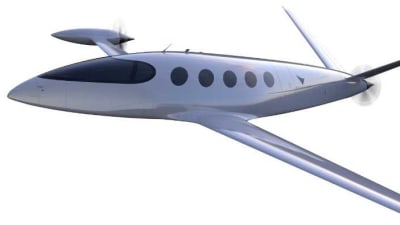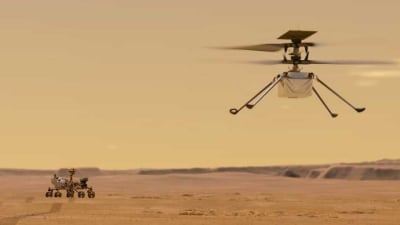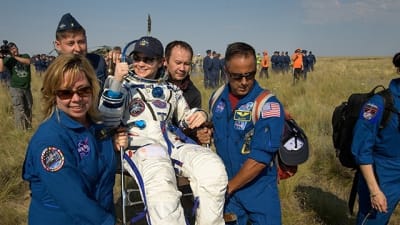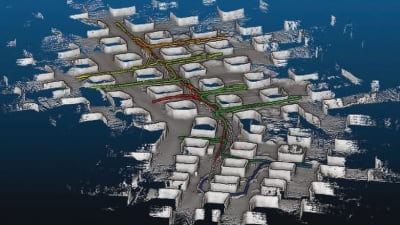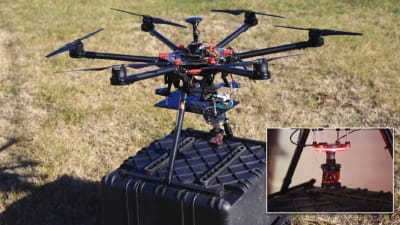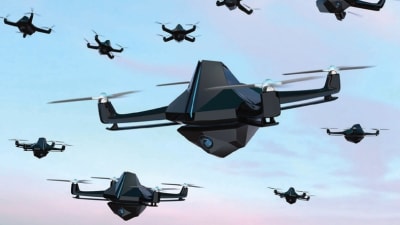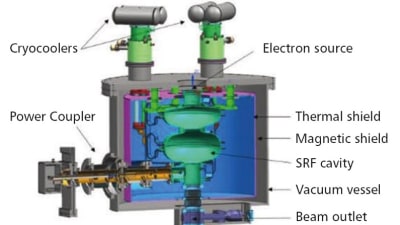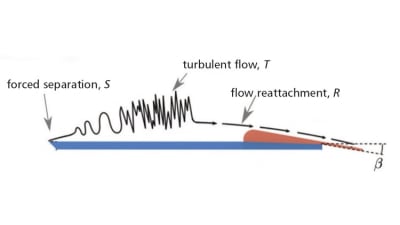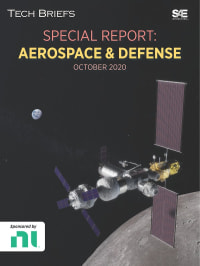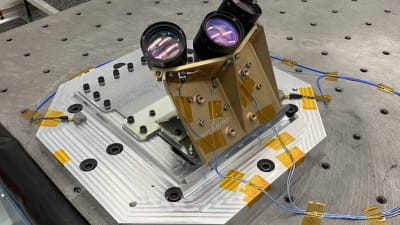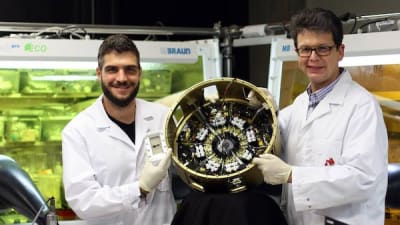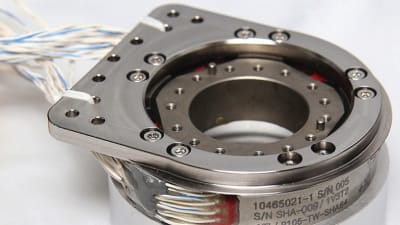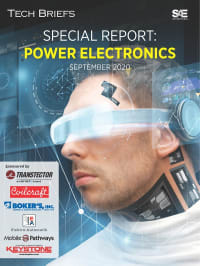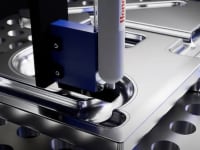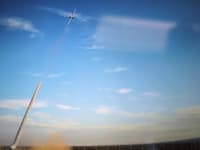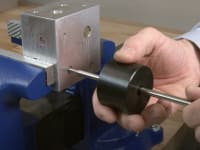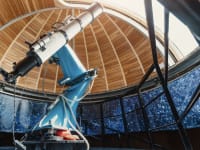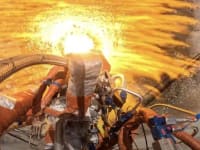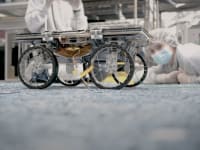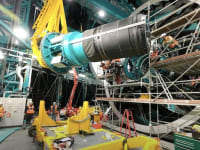Stories
48
61
-1
750
30
Briefs: Mechanical & Fluid Systems
Applications include retractable covers and awnings, camera booms, and spacecraft and astronaut positioning.
Blog: Aerospace
An Israel-based company called Eviation is working on an all-electric aircraft known as "Alice." Will it match the speeds of a jet?
Blog: Motion Control
The great tasks of retrieving samples and flying a helicopter on Mars requires a number of small parts — specifically motors and drives.
Briefs: Aerospace
The material can be used in power electronics and power converters for solar energy power systems.
Briefs: Aerospace
The flexible composites can be used as thermal insulation for environments of up to 1200 °C.
Briefs: Manufacturing & Prototyping
This versatile new material family could build realistic prosthetics and futuristic Army platforms.
NASA Spinoff: Test & Measurement
A technique to assess astronauts’ balance recovery helps people assess their risk of falling.
Special Reports: Aerospace
Additive Manufacturing - November 2020
AM/3D Printing is fundamentally changing how products are prototyped and produced in aerospace, medical, electronics, and many other fields. To help you keep pace with the latest advances, we present this...Briefs: Aerospace
The response time of kinetic inductance bolometers can be greatly enhanced by electrothermal feedback for devices that are both sensitive and speedy.
NASA Spinoff: Test & Measurement
NASA's UAS traffic management expertise leads to advances in drone navigation.
Briefs: Electronics & Computers
The new battery technology could improve electric vertical takeoff and landing aircraft and supercharge safe, long-range electric cars.
Briefs: Imaging
This system has a capacity of more than 1,500 times the volume of a typical testing facility.
Briefs: Robotics, Automation & Control
The learning approach allows swarms of unmanned vehicles to optimally accomplish their mission while minimizing performance uncertainty.
Briefs: Robotics, Automation & Control
Tiny aircraft that weigh as much as a fruit fly could serve as Martian atmospheric probes.
Briefs: Manufacturing & Prototyping
Applications include rapid prototyping, medical, aerospace, and automotive.
Briefs: Energy
Taking a cue from birds and insects, the wing design helps drones fly more efficiently and makes them more robust to atmospheric turbulence.
Briefs: Aerospace
This capability will optimize performance of the vehicle through different phases of flight.
Special Reports: RF & Microwave Electronics
Aerospace & Defense - October 2020
In this compendium of recent articles from the editors of Tech Briefs and Aerospace & Defense Technology, you'll learn about NASA's return to the moon with Apollo's twin sister Artemis, how autonomous...Special Reports: Communications
RF & Microwave Electronics - October 2020
In this compendium of recent articles from the editors of Aerospace & Defense Technology and Tech Briefs, read about how advances in RF electronics are enabling new applications in space and ground...INSIDER: Motion Control
For planned robotic and crewed missions to the Moon and Mars, NASA is developing and testing precise landing and hazard-avoidance technologies. A combination of laser sensors, a camera, a high-speed...
Blog: Mechanical & Fluid Systems
As Brazil begins mass-producing a NASA-developed ventilator, a Tech Briefs reader asks why NASA didn't go open-source.
INSIDER: Energy
Almost all satellites are powered by solar cells – but solar cells are heavy. While conventional high-performance cells reach up to three watts of electricity per gram,...
Podcasts: Robotics, Automation & Control
Before delivery drones start carrying packages (and passenger drones start delivering ourselves), engineers will need to keep refining an unmanned aircraft's ability to navigate and...
Briefs: Materials
The instrument has uses in photography where the goal is to image a dim object near a bright one.
Facility Focus: Sensors/Data Acquisition
Stennis now is testing RS-25 rocket engines for the Space Launch System (SLS) that will carry humans back to the Moon.
Briefs: Medical
Biomaterial Shields Against Harmful Radiation
A new form of melanin can protect human tissue from X-rays during medical treatment or spaceflight.
Application Briefs: Sensors/Data Acquisition
See how one company reached out to NASA with an offer to develop a custom sensor for the Mars 2020 mission rover.
Special Reports: Transportation
Power Electronics - September 2020
This compendium of recent articles from the editors of Tech Briefs and Aerospace & Defense Technology looks at the latest advances in power electronics and energy storage for a range of applications...Special Reports: Test & Measurement
Aerospace & Defense - September 2020
In this compendium of recent articles from the editors of Tech Briefs and Aerospace & Defense Technology, you'll learn about the technology driving the Mars 2020 rover, how NASA will use GPS to navigate...Top Stories
Blog: Manufacturing & Prototyping
2025 Holiday Gift Guide for Engineers: Tech, Tools, and Gadgets
INSIDER: Research Lab
Scientists Create Superconducting Semiconductor Material
Blog: Software
Quiz: Materials
Blog: Aerospace
Tech Briefs Wrapped 2025: Top 10 Technology Stories
Blog: Manufacturing & Prototyping
Webcasts
 Upcoming Webinars: AR/AI
Upcoming Webinars: AR/AI
The Real Impact of AR and AI in the Industrial Equipment Industry
 Upcoming Webinars: Motion Control
Upcoming Webinars: Motion Control
Next-Generation Linear and Rotary Stages: When Ultra Precision...
 Upcoming Webinars: Energy
Upcoming Webinars: Energy
Hydrogen Engines Are Heating Up for Heavy Duty
 Podcasts: Medical
Podcasts: Medical
How Wearables Are Enhancing Smart Drug Delivery
 Podcasts: Power
Podcasts: Power
SAE Automotive Podcast: Solid-State Batteries



